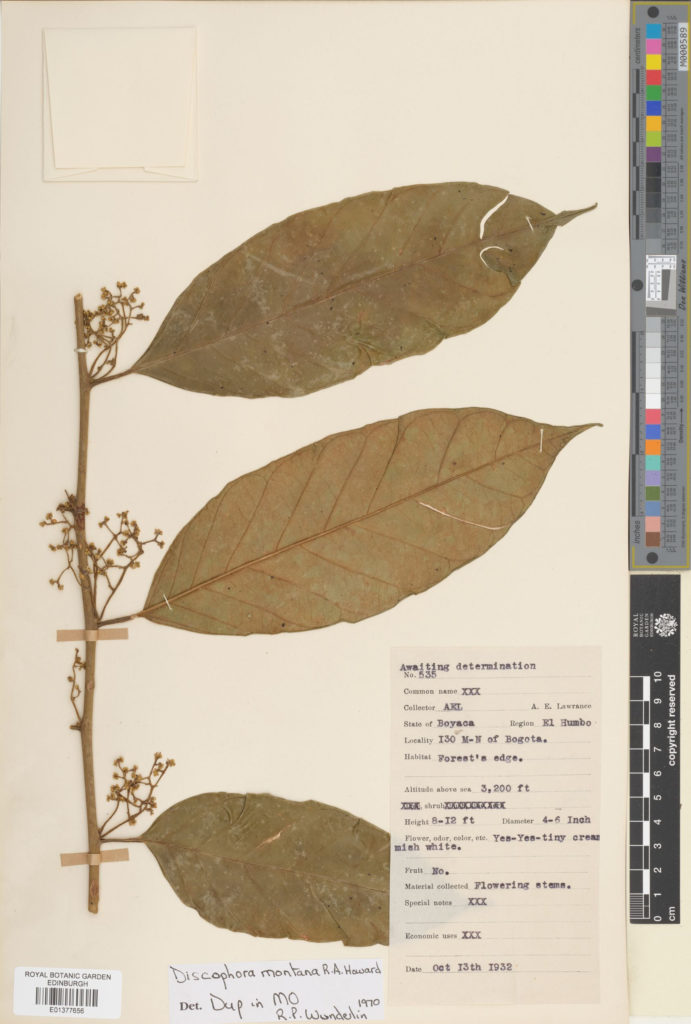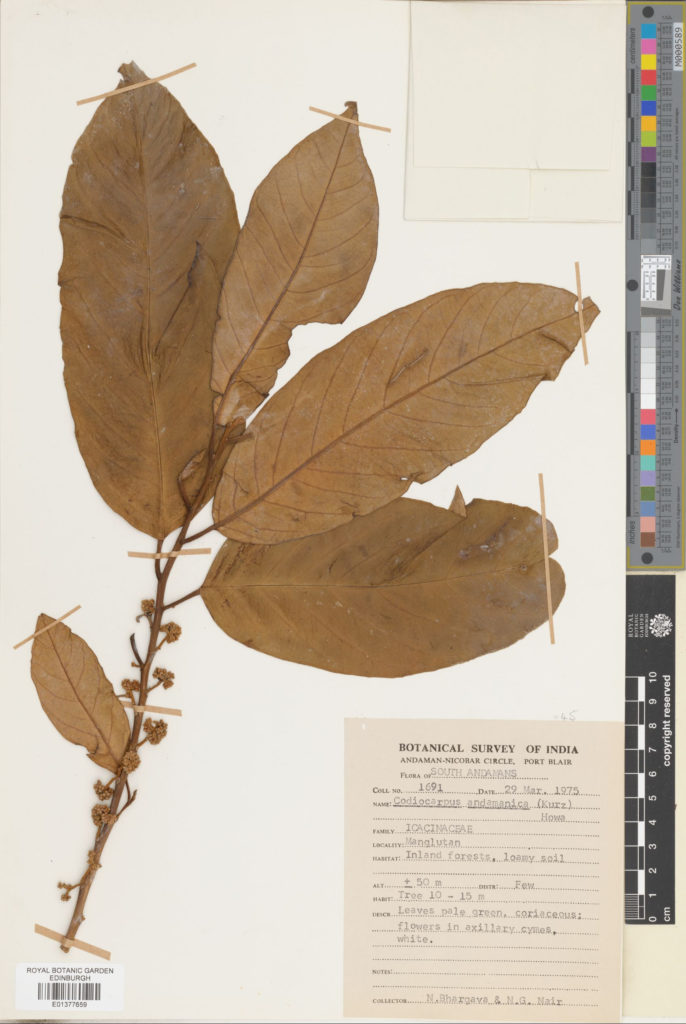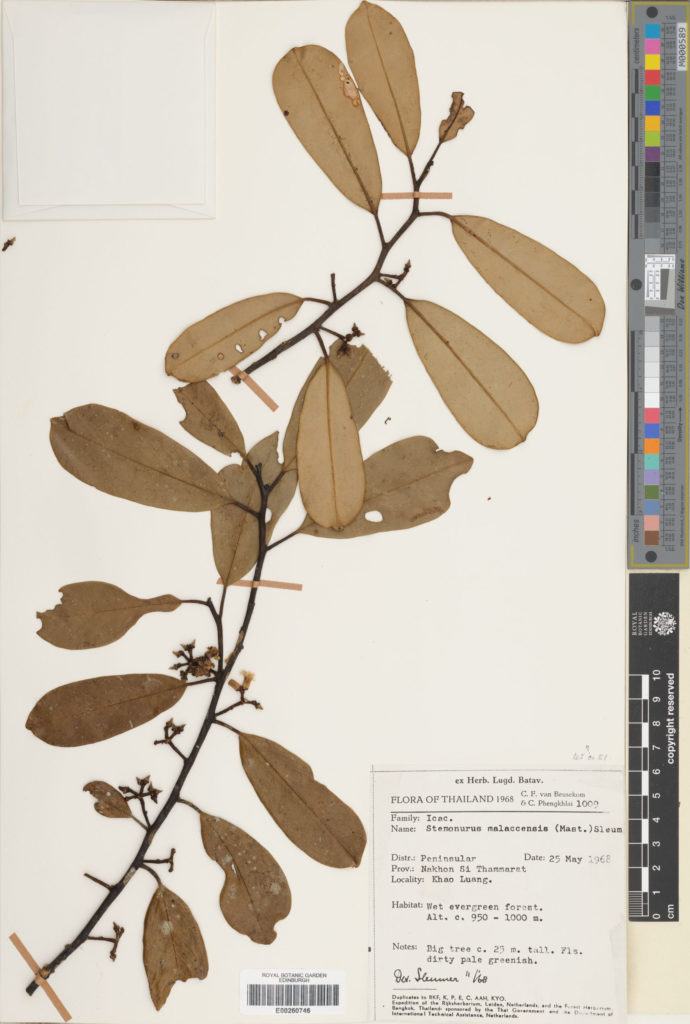The following blog was written by Rebecca Camfield a digitiser in the Herbarium.
Since 2021 we have increased our digitisation capacity with the goal of getting to 1 million specimens imaged by Autumn 2024. Each digitiser is assigned a family of plants to work through. This series of blogs will spotlight the families that have been completed by a member of the team.
Schlegeliaceae
A small neotropical family found in Central and Southern America and the Caribbean. There are 4 genera; Schlegelia, Gibsoniothamnus, Synapsis and Exarata.
Thomandersia is now considered part of its own family but our collections are yet to incorporate this change and it is thus still found in this family. It is native to Central and West Africa.
Schlegeliaceae is one of the many families that was previously part of the Scrophulariaceae. The majority of species in this family are root climbing lianas, however they can also be epiphytic shrubs or free standing. They like the wet environments of rain and cloud forests.
Our collections consist of three genera:
Thomandersia: (34 specimens)
Schlegelia:(12 specimens)
Gibsoniothamnus: (1 specimen)
It would be nice to add representations of the other two genera. Syanapsis is endemic to Cuba with 1 species and Exarata is native to Ecuador and Colombia, again with a single species.
Our collections of Schlegeliaceae can be viewed here.
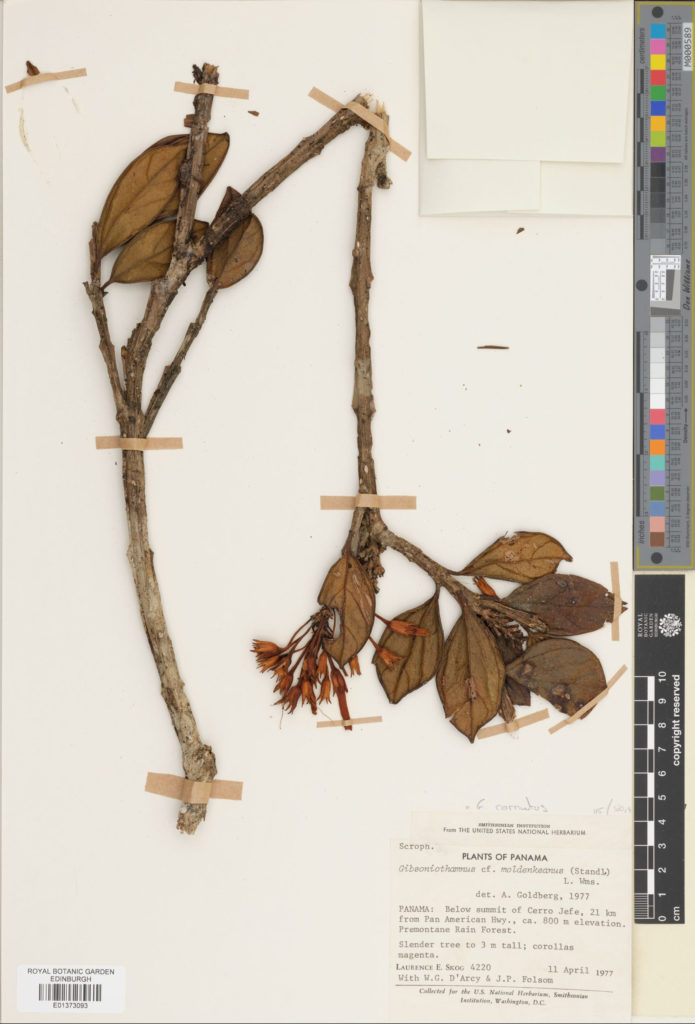
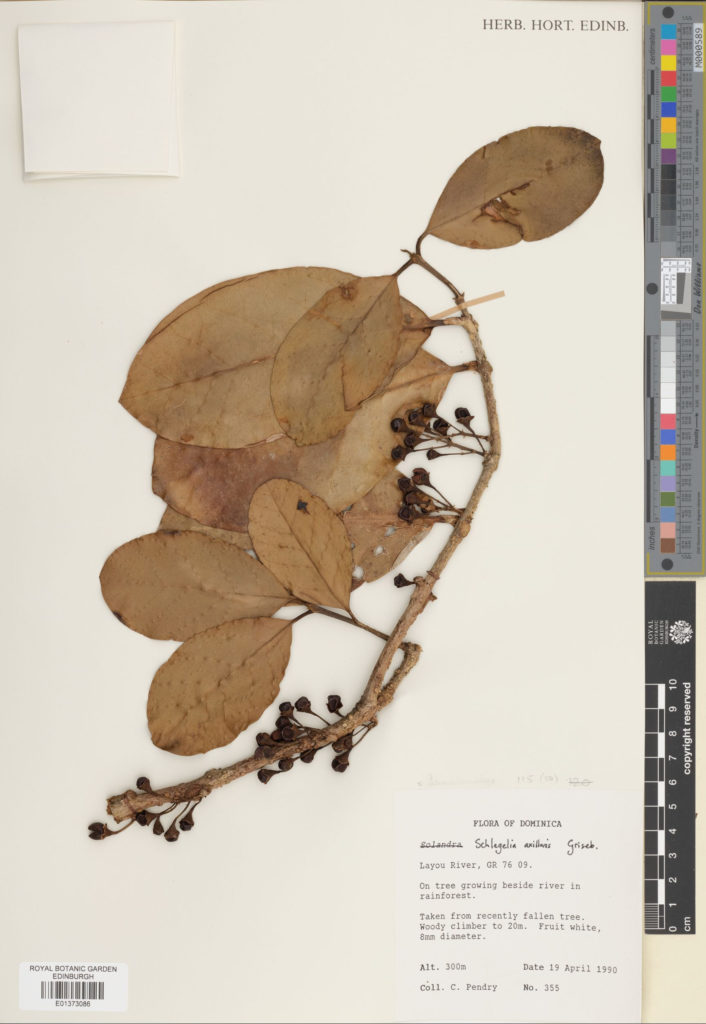
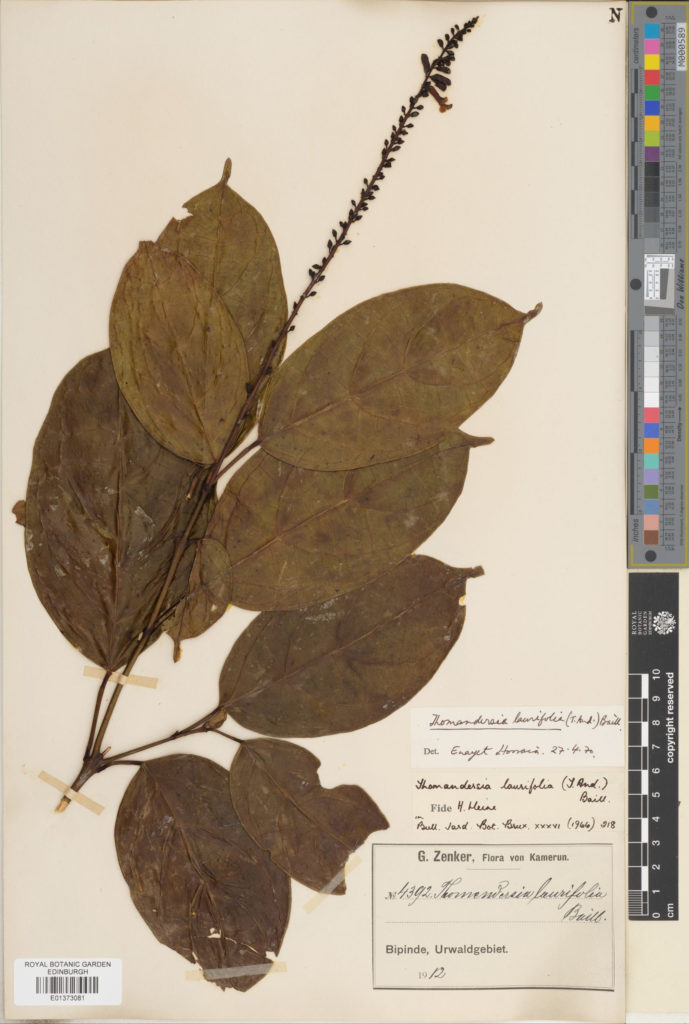
Martyniaceae
Martyniaceae are native to the Americas but has been introduced to other countries in Southeast Asia, Africa and Europe.
The family has 5 genera:
Craniolaria: (5 specimens) 2 species native to South America.
Holoregima: (none) One species native to NE Brazil.
Ibicella: (9 specimens) 2 species native to Central South America.
Martynia: (29 specimens) 2 species native to Central America and the Caribbean. Introduced to Asia as half of our collections are from India and Nepal.
Proboscidea: (19 specimens) 7 species mostly native to North and Central America but also Peru.
Although native to the Americas due to it being introduced elsewhere and with RBGE having historical links to certain regions. It has led to Nepal having the most collections in our herbarium (10 specimens).
| No. of Specimens | Herbarium Filing Region |
| 10 | Nepal |
| 9 | India, Pakistan & Bangladesh |
| 9 | North America |
| 8 | Cultivated |
| 7 | Central America |
| 7 | East Tropical South America |
With RBGEs current work in South America we could add more collections to this family’s native habitat and get a representative for the missing genus, Holoregima.
Prior to mass digitisation only 29 specimens were available through our catalogue. Following mass digitisation we now have 62 specimens catalogued. Our collections are available here.
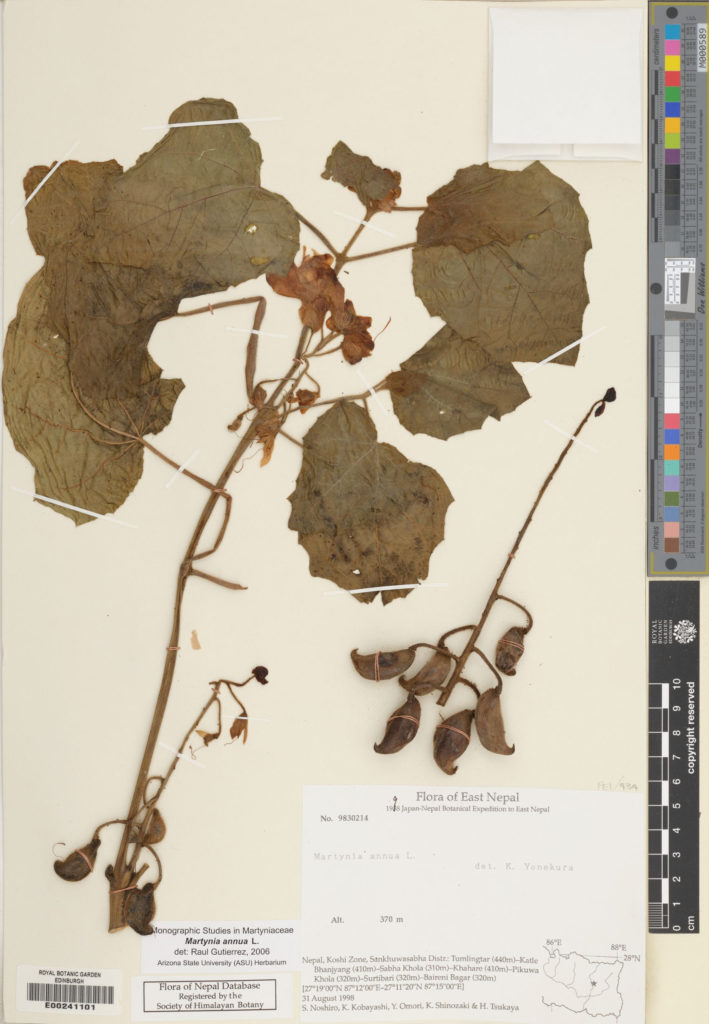
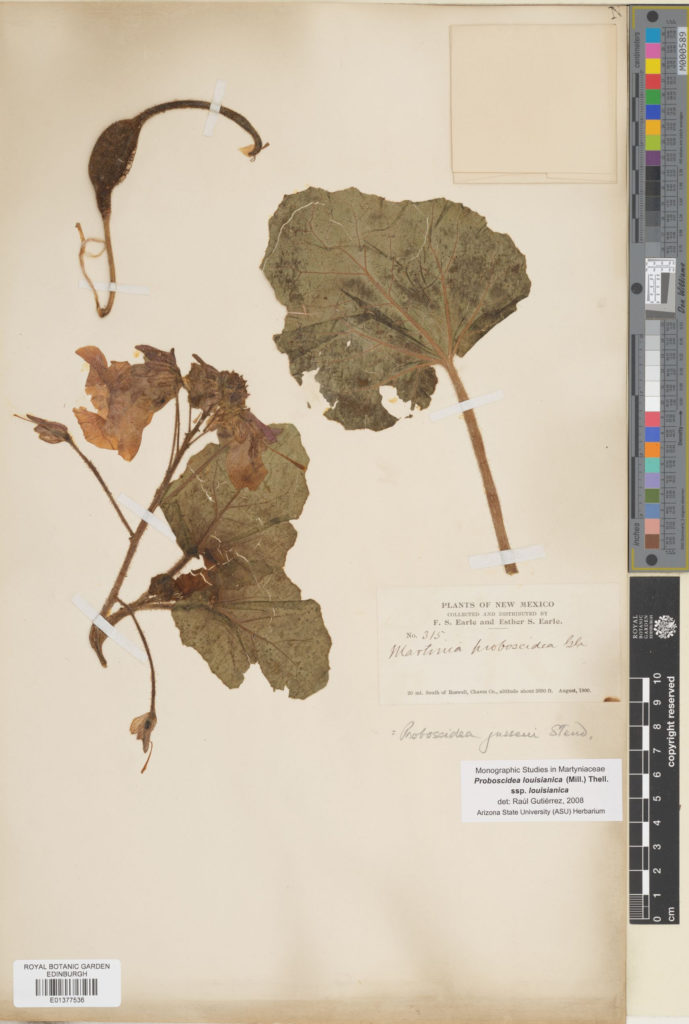
Byblidaceae
A monotypic family with one genus (Byblis) found in Australia and Papua New Guinea. These carnivorous plants have a similar form to those of Drosera (the sundews), an example of convergent evolution. Byblis are sometimes known as the rainbow plants due to how the sun shines on their sticky droplets. Just like most other carnivorous plants they are found in bogs and marshes which limits their range to Northern Australia and Southern Papua New Guinea.
In our collections we have 25 specimens from Australia and 1 cultivated specimen. Our collections can be viewed here.
It would be great to expand our collection, so it includes some from Papua New Guinea. We currently only have 2 of the 8 known species for the genus in our collection.
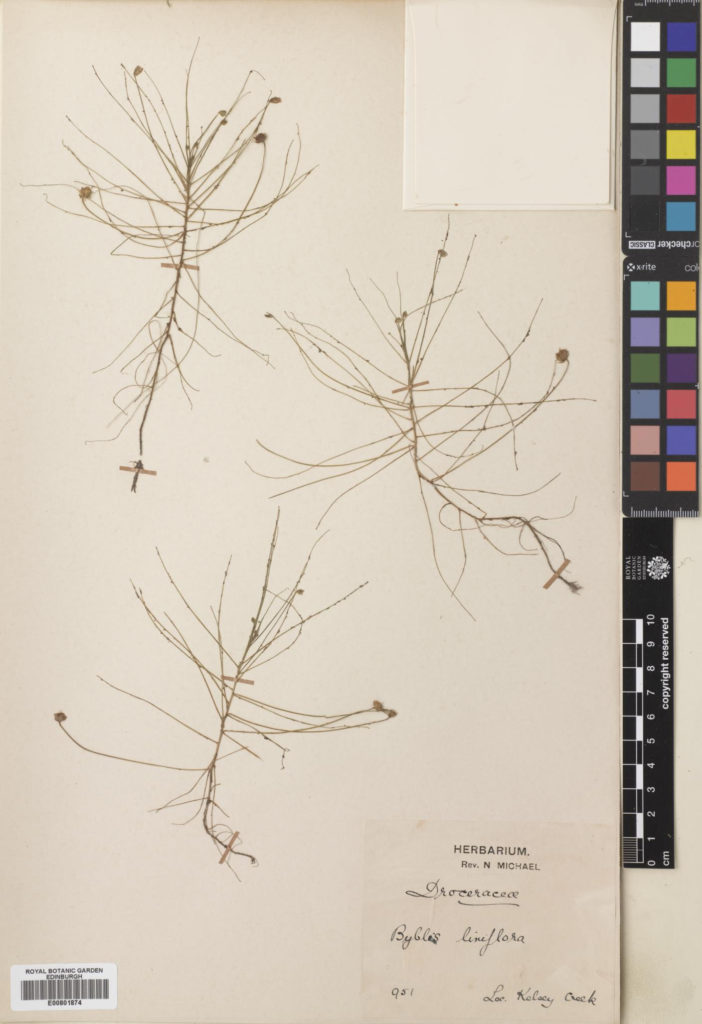
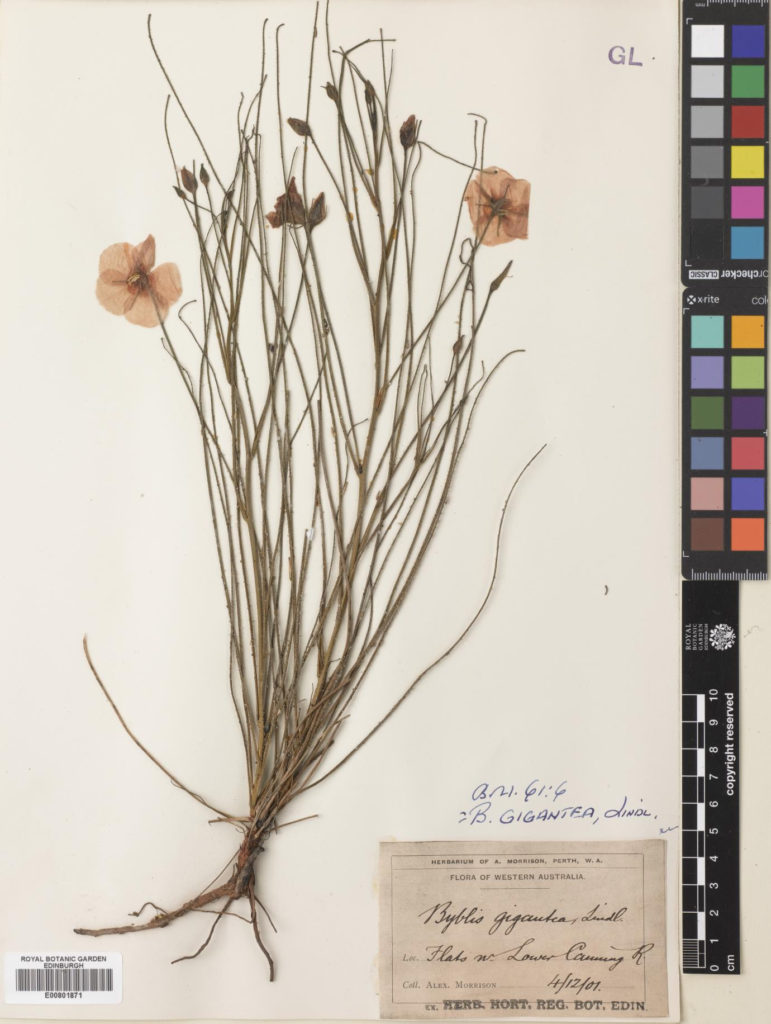
Stemonuraceae
Stemonuraceae is a family of mostly aromatic evergreen trees and shrubs, with 12 genera and 79 species. Found in most tropical regions of the Southern hemisphere, with higher diversity in SE Asia through Indonesia and into Australasia.
Stemonurus and Gomphandra have the largest distribution covering most of SE Asia into Indonesia. Medusanthera and Cantleya are found on several islands in Indonesia. The other genera are native to smaller regions. Irvingbaileya to Australia (Queensland), Whitmorea to the Solomon Isles, Hartleya to PNG, Gastrolepis to New Caledonia, Codiocarpus to the Philippines (and the Andaman & Nicobar Islands) and Grisollea to Madagascar (and Seychelles). Then there is Discophora found in tropical regions of South America and Laisanthera in Central West Africa.
Our collections
Prior to mass digitisation we had 165 specimens, following mass digitisation we have 278 specimens in our catalogue.
Top 5 Regions
| No. of Specimens | Herbarium Filing Region |
| 54 | Malay Islands |
| 49 | Papua New Guinea |
| 34 | Indo-China |
| 28 | India, Pakistan & Bangladesh |
| 17 | Sri Lanka |
Top 5 Genera
| No. of Specimens | Genus |
| 152 | Gomphandra |
| 72 | Stemonurus |
| 13 | Medusanthera |
| 8 | Discophora |
| 5 | Codiocarpus |
Over half the specimens in our collection are Gomphandra, which isn’t surprising as it has the largest distribution and species count with 44. The others are low in number due to their endemic nature, and a few are monotypic.
The herbarium does not have any collections of the following genera: Cantleya, Gastrolepis, Grisollea, Hartleya and Whitmorea. Our collections of the South American genus Discophora and the African genus Laisanthera could also be improved as have less than 10 for each of those.
Our collections can be viewed here.
